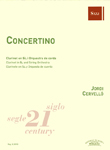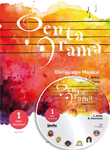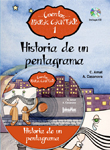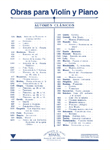Cançons de muntanya
Voz y Piano
BLANCAFORT, ManuelReg.: B.4080
23,80 €
P.V.P. (VAT included 4%)
Add to cart
- Arrangement: VILLALBA, Miquel
- Ensemble: Duos: With piano; With voice.
- Genres: Classical / contemporary: Arrangements and Transcripts; Choir; Chamber.
- Language: Catalán
- Language of the comment: Català/English/Castellano
- Product format: Partitura
- Difficulty level: Intermediate-advanced
- Period: 1st half S. XX
- Publishing house: Editorial Boileau
- No. of pages: 32
- Measure: 31,00 x 23,00 cm
- Lenght: 13'26''
- ISMN: 979-0-3503-4275-2
- Available in digital: No
- Available for rent: No
Songs by Blancafort
Manuel Blancafort believed that in all musical works there are three basic components: melody, harmony and rhythm. Although those three elements are always present, often without realizing it, every composer prioritizes one or more of them over the others. Blancafort presented this viewpoint at the time that an exploration of new timbres and rhythms began to become important and also as atonality was expanding. He wrote in a notebook: «There is music that resonates and music that sings. I am on the side of that which sings», thus indicating his preference for melody.
In Blancafort’s music rhythmic complexities and harmonic subtleties are always dominated by the melody which ties everything together. His music sings. That singing quality is also present in his instrumental music. In addition, a considerable number of his piano works are essentially songs without words.
His youthful compositions, which were both inspired and supported through his friendship with Mompou, are short works that evoke a dialogue, or at times a monologue, between outside sensations and inner emotions. He wrote in his notebook: «I imagined a kind of Catalan music in which clarity reigned—simple music without excessive counterpoint or nebulous chromaticism that overwhelm that pure expressivity of our lyricism. Tonal music, both logical and concise».
Blancafort’s music evolved over time, gaining sonic richness in orchestral works as well as developing complexity in his formal structures. Encouraged by these achievements, he gradually moved toward Neo-Classicism. Following the Civil War, he composed numerous works including symphonies, string quartets and a concerto for piano and orchestra. This might appear to be somewhat removed from his youthful aesthetic principals that he shared with Mompou, however, that is not the case. Songs, lieder, were a constant for Blancafort and he regularly composed songs throughout his lifetime. And, it is precisely in his lieder where his original principals are a constant presence. Even though those principals later evolved with his distinctive personal style, far removed from minimalism.
Commentaries about the edition
This score is an arrangement for voice and piano created by this author at the request of the Manuel Blancafort Foundation. It is a compilation of works originally composed for piano solo in 1916-1918 and published by Unión Musical Española. That edition contained the sub-title «Cants sense paraules» [Songs Without Words], revealing the vocal character of the melodies of the collection. In the original manuscripts preserved at the Biblioteca de Catalunya (M. 4888/7, 4888/4a, 4888/9-11, 4888/6 a,b,c) there are short poems written in the margins by the composer himself. Those texts clearly reveal the atmosphere of each piece. Nevertheless, at times, the words of the poems do not coincide with the corresponding melody. Consequently, we have opted to include the poems written in 1997 specifically for this work by Josefina Pons (1941-2012) at the request of pianist Joan Amils, and approved by the composer’s family.
The principal source for this edition is a copy of the edition published by UME, preserved in the Blancafort family archive, in which the texts are written directly below the melodies. In this edition the original titles of the piano pieces have been used as well as the original notation which here has been divided between the voice and piano in order to create a dialogue.
1. Cançó del vent gronxant les branques
2. Cançó dalt del cingle
3. Cançó de l’hivern
4. Cançó de l’adéu
5. Cançó de l’arribada al cim
6. Cançó de la tarda morint
7. Cançó d’enyorança
8. Cançó del silenci del capvespre
9. Cançó del matí lluminós










